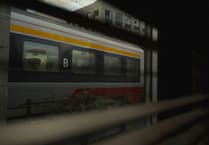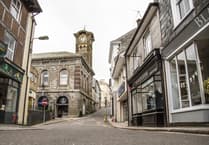IN the Caradon Copper Boom years in the second half of the 19th century it wasn’t only the Miners of West Cornwall who arrived, and many remained permanently, in Liskeard and the surrounding villages. Many others stayed for only a few days, or weeks, conducting their business before moving on to pastures new. One of the several Lodging Houses in Liskeard to accommodate them in 1871 was on Cannon Hill, run by 31-year-old Irish born Mrs Catherine Moore. Her husband Michael, a Londoner, must have been an ‘interesting’ character; based mainly in East Looe, his various occupations are recorded as Dealer in Marine Stores, Pedlar, Hawker, and for short time Superintendent of the Sanitorium in Wigan, Lancashire, where Mrs Moore was the Matron.
Information in the census of 1871 confirms that Liskeard was an important centre for business and employment, with a reputation that reached many parts of Great Britain. Residents in the Lodging House Included a Brick Layer from Yorkshire, a Crate Maker from Staffordshire, a Music Player from Ireland and a Hawker from Pembrokeshire. On the night of the census, including Mrs Moore and her five children, there were 34 visitors paying 2d each; by paying this they avoided being classed as Vagrants and moved on by the Constables.
One of the visitors was 20-year-old William Merrifield, an Umbrella Maker from St Agnes. It’s thought that William may have been the victim of a crime committed by a David Cardew who was lodging in the nearby Queens Head Inn on Church Street North. Cardew, an Umbrella Mender, was sentenced to six weeks in Bodmin Gaol for stealing an umbrella from an unnamed fellow traveller. The only other record I can find of William is when he had been abandoned in the St Clement Workhouse in Truro at 4 years old and classed as an inmate Pauper.
By Brian Oldham, museum volunteer and Bard of the Gorsedh Kernow





Comments
This article has no comments yet. Be the first to leave a comment.